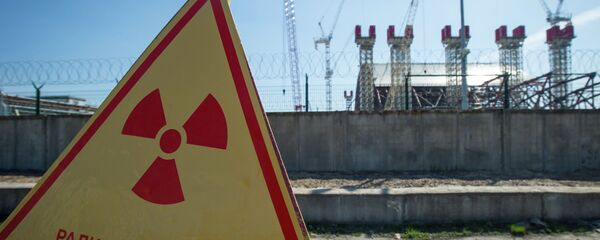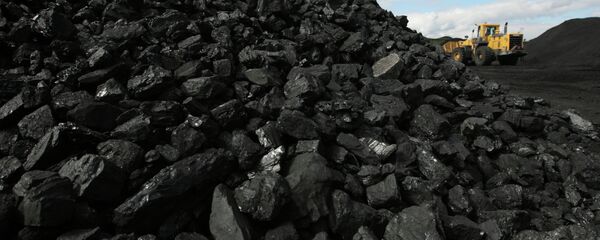Late last week, Ukrainian Energy Minister Igor Nasalik confirmed that Kiev had approved a new Concept 'on the Reform and Development of the Coal Industry', which "provides for the complete replacement of anthracite coal used by power plants" with other energy sources by 2019.
Ukraine has faced problems in the supply of the anthracite coal, crucial to the country's network of coal-fired thermal power plants, from the breakaway Donbass region. In spite of the civil war in the region, the breakaways continued to sell anthracite to Kiev until January, when Ukrainian radicals initiated a makeshift 'blockade', and which authorities have since agreed to tacitly approve.
Since then, Kiev has been forced to introduce emergency measures to prevent rolling blackouts across the country. Six of the country's fifteen thermal power plants, including the Tripolskaya Plant, which supplies Kiev with electricity, operate exclusively on anthracite. In the spring, shortages forced five of the plants to halt operations, with electricity generated by nuclear power picking up the slack.
Nasalik's new strategy to abandon anthracite altogether seems to mean that the hoped for deal for American anthracite coal has fallen through.
This leaves nuclear power. Ukraine's four Soviet-era nuclear power plants and their fifteen reactors already generate over 60% of Ukraine's electricity. Experts warn that putting excessive strain on the aging plants could ultimately lead to a man-made disaster, the consequences of which would be dire not just for Ukraine itself, but for Russia and Europe as well.

Speaking to Svobodnaya Pressa, a Russian news and analysis portal, Pasechnik said that Kiev's main problem is that political considerations are more important than economic ones.
"The issue is not only one of technology, but of finding a replacement scheme," the analyst explained. "Obviously, Ukrainian authorities do not want to use coal from Donbass, which is still being sent to them, only through alternative channels…The alternatives left to Kiev are the worst available options in the commercial sense. But for political reasons, Ukraine is ready to overpay considerably, and to spend several years restructuring the country's entire thermal power generation system."

Pasechnik clarified that all the alternative sources of coal supplies, including the US, Australia or South Africa, each cost a minimum of several hundred million dollars more than supplies from Russia or the Donbass, in part due to the extreme distances they have to travel to reach the Eastern European country.
"By the way, the same thing is happening with gas," Pasechnik added. "Instead of buying gas directly from Russia, they buy the same Russian gas from Europe, and admit themselves that they overpay up to $30 per thousand cubic meters. The same thing will happen with the coal."
As for the Ukrainian energy minister's latest promise – to end dependence on anthracite, including through the overhaul of Ukraine's power plants to use other grades of coal, here too a great deal of investment would be needed, Pasechnik said. In this case, logic would dictate that additional sources of coal would first have to be found, and its price determined, before the overhaul of plants begins. Whether Kiev actually follows through with this kind of cost-benefit analysis is another story.

For his part, Alexander Frolov, the deputy director of the Russian National Energy Institute, said that Kiev simply does not have the resources to convert its anthracite plants to operate using other forms of coal. In fact, he said, the only logical 'conversion' would factually require the construction of new plants.
"2019 is an election year in Ukraine, and there is a likelihood that the current president will not remain in his post," Frolov said. "For this reason, the country's leaders can promise anything and everything after 2019 –that they will repay all the country's debts, raise pensions, give out 1,000 euros to every citizen, etc. The promise to convert the country's network of thermal power plants from anthracite to other kinds of coal is from this same series."
But in all other instances, Frolov stressed that "it is physically impossible to reject anthracite and transfer power plants to operate on other grades of coal…Ukraine does not have either the time, the money, the specialists, or the equipment to do this. Coal-powered power plants are a very peculiar thing. If you stop working with them in a proper manner, even for a short period – if you use other fuels, or don't invest in repair and modernization, they can quickly be lost."
Ultimately, the expert emphasized that as a rule, revamping coal-fired power plants really amounts to the construction of new plants, and the closure of old ones, not conversion of existing plants. "Therefore, it seems to me that all the statements by the Ukrainian energy minister are either merely PR and empty promises, or the sincere expectation that the number of consumers will decrease to such an extent that power stations using anthracite are simply no longer needed," Frolov concluded.






